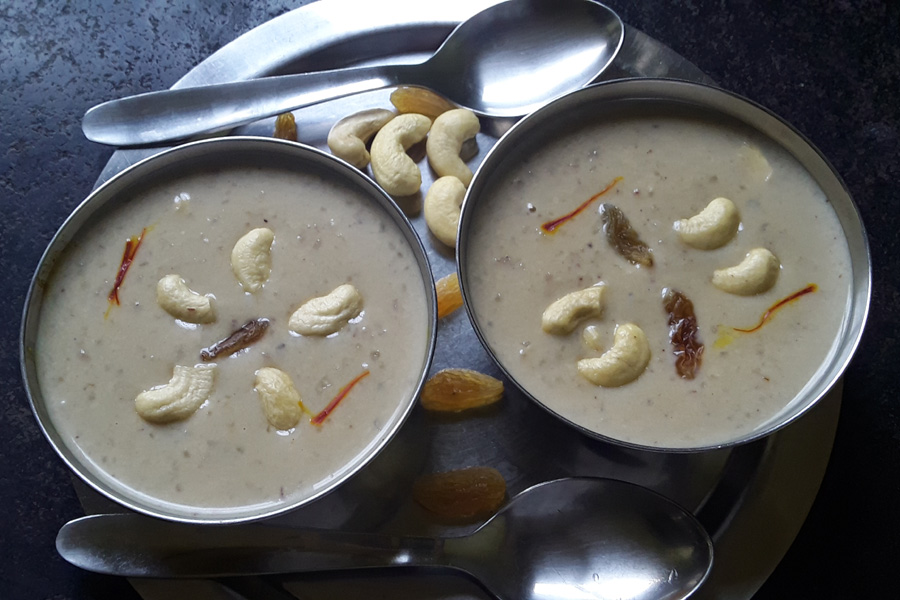Holige | Sweet stuffed flatbread

By Usha Hegde, Puttanamane
Holige is a delicious thin soft flatbread stuffed with a sweet, cardamom scented lentil filling. This sweet stuffing is called hoorna and the lentil used for stuffing is kadle bele or chana dal (husked and spilt bengal gram or black chickpeas). And, for the outer covering whole wheat flour is used.
This havyaka classic and traditional holige is also known as Enne holige. Enne means oil. The reason behind this naming convention is that there is another version - hittina holige. The difference is, dry flour is used while rolling hittina holige, and in this traditional holige recipe dry flour is not used while rolling.
Making holige does take a long time and also require skill and patience. But the results are well worth it. The ingredients used in the recipe make holige pretty nutritious and healthy. You can eat holige for breakfast or lunch or dinner.
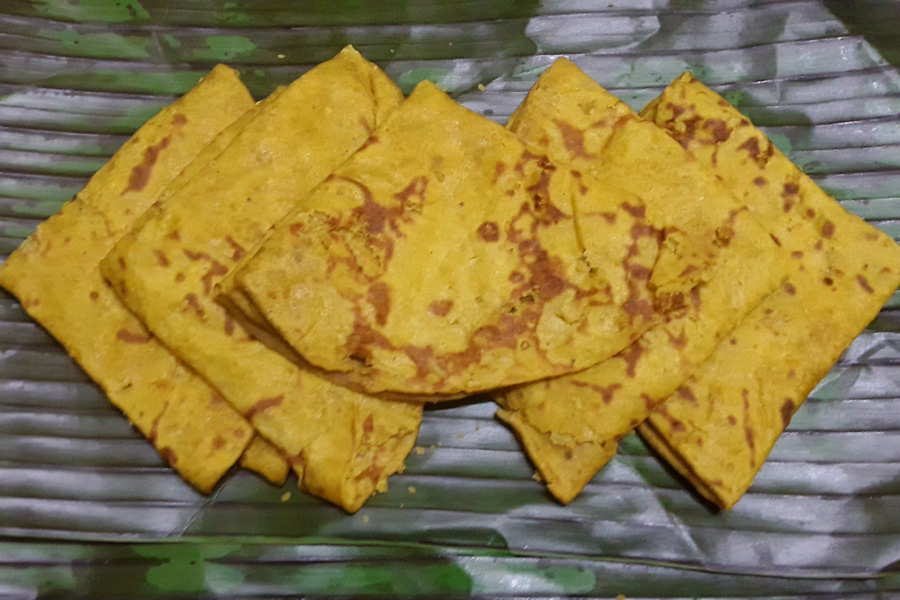
More on this festive dish
Holige is a favored sweet dish during social occasions like weddings, and a festive dish too. It is a tradition to make holige during Deepavali and Yugadi festivals. On the 4th day of deepavali, i.e. on Bali padya, I make 60 to 80 holige. On this day we perform Gopooja (worship of cows) and cows are also fed with this special deepavali sweet dish. Holige is also distributed to all the farmhands as deepavali sweet.


Prep time
2 hrs
Cook time
45 mins
Cool off time
0
Total time
2 hrs 45 mins
Course
Sweets
Diet
Vegan, Vegetarian
Difficulty level
Difficult
Servings
15 Holige
Ingredients
-
250 grams kadle bele or chana dal (husked split bengal gram or black chickpeas)
- 250 grams whole wheat flour
- 4 tablespoons jaggery or as required
- 3 tablespoons oil or as required
- 5 to 6 cardamoms
- 2 teaspoon turmeric powder or as required
- Salt as required
- Water as required
Cookware / Utensils
-
Bowl(s)
- Thick pan or vessel
- Mixer or grinder
- Tawa or flat frying pan
- Turner or spatula
- Rolling board and roller / rolling pin
- 4 to 5 pieces of banana leaf
- Wooden board/base or muslin cloth
Instructions
Instructions
Basic preparation
- Take 250 grams kadle bele (chana dal or husked split bengal gram) in a bowl.
- Rinse the kadle bele (chana dal) 2 to 3 times or until clean. Soak the lentils for about 30 minutes.
- Take 4 pieces banana leaf and wash them thoroughly with water or clean them with wet fresh cloth and keep aside.
- Take 5 to 6 cardamoms and remove the seeds. Rinse the seeds, cover and keep aside.
Prepare hoorna (sweet filling or stuffing)
- Drain the water from the soaked lentil, add fresh water as required to the lentils and cook the lentils.
- The lentils cooked should be very soft. They should get mashed very easily with your fingers.
- Strain the lentils and keep the lentils stock (strained water) aside.
- Now take the strained lentils in a thick and wide pan or vessel. Add 4 tablespoons jaggery or as required.
- Add 1/6 teaspoon of salt and mix well.
- Cook the mixture on medium heat. Stir at intervals. Make sure lentils mixture is not sticking at the bottom.
- Once the mixture thickens, turn off the heat. Let the mixture cool down.
- Now, add the lentils mixture to a mixer jar or grinder. Add the cardamom seeds.
- Grind the mixture to a smooth consistency. There should not be any lentil left in the grinded mixture. This grinded stuffing mixture is Hoorna.
- Take the Hoorna (stuffing mixture) in a bowl. Cover and keep aside.
Prepare outer covering dough
- Take 250 grams whole wheat flour in a bowl. Add 2 teaspoons of turmeric powder. Add 1/2 teaspoon salt or as required.
- Mix well. Add water as required. The dough should be slightly thinner than the Roti dough.
- Mix well and knead the dough lightly.
- Then, add 2 tablespoons of oil and continue to knead the dough. Let the dough absorb the oil.
- The dough should get a smooth, soft and elastic texture.
- Add 1 tablespoon of oil to the dough, cover and keep aside. Let it rest for 20 to 30 minutes.
Stuff and roll
- Now, take a portion of the hoorna, the stuffing mixture, and make 3 to 4 medium sized balls. Keep the rest of the mixture covered. The mixture or balls should not become dry.
- Take a small portion, half the quantity of the stuffing ball, from the dough and roll it to a ball. Gently flatten with your fingers.
- Place the stuffing ball in the center of the flattened dough.
- Cover the stuffing with the dough by bringing the edges towards the center of the stuffing.
- Join all the edges at the center. Flatten the stuffed dough ball slightly with your palms. Keep 2 to 3 stuffed dough balls ready.
- Now, take a rolling board and place a banana leaf piece which was cleaned and kept aside earlier.
- Place the stuffed dough ball on rolling board. Make sure that sealed side is downwards while rolling the stuffed dough ball.
- Gently roll it to a large circle. You need to roll it pretty thin, so that you can almost see the hoorna, the stuffing. But the stuffing should not come out. The hoorna or the stuffing should be spread evenly across the circle or holige.
Roast holige
- Heat a tawa on medium or high flame. Once heated reduce the heat to low. Regulate the heat as required while roasting Holige.
- Place the rolled holige on the tawa along with banana leaf.
- Remove the banana leaf gently.
- Let the holige get cook on one side. Holige will get roasted quickly and you need to be very attentive.
- Roast till one side is golden and then gently flip the holige. Roast the second side of the holige till golden.
- Remove and place it on a wooden platform or muslin cloth. This way make all the holige.
- Serve the holige hot or warm or at room temperature with fresh ghee. If you are a vegan you can eat holige as-is.
Step by step guide
How to make Holige
Basic preparation
1. Take 250 grams kadle bele (chana dal or husked split bengal gram) in a bowl.

2. Rinse the kadle bele (chana dal) 2 to 3 times or until clean. Soak the lentils for about 30 minutes.

3. Take 4 pieces banana leaf and wash them thoroughly with water or clean them with wet fresh cloth and keep aside.
Keep 1 or 2 more pieces of banana leaf as it will shrink once placed on tawa.

4. Take 5 to 6 cardamoms and remove the seeds. Rinse the seeds, cover and keep aside.

Prepare hoorna (sweet filling or stuffing)
5. Drain the water from the soaked lentil, add fresh water as required to the lentils and cook the lentils.
You can also cook the lentils in a pressure cooker.
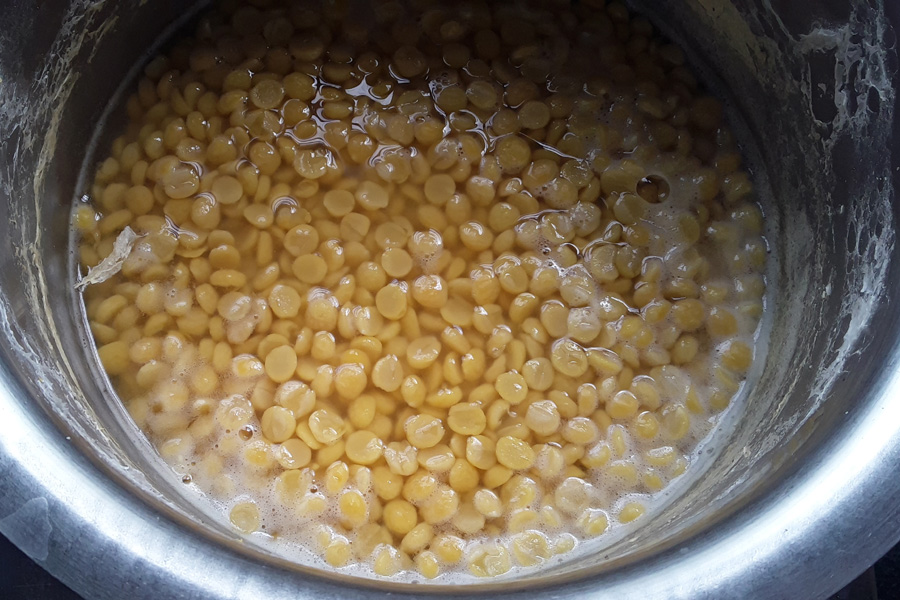
6. The lentils cooked should be very soft. They should get mashed very easily with your fingers.

7. Strain the lentils and keep the lentils stock (strained water) aside.
Lentils stock can be used to make Belekattina saaru (Kind of thin spiced veg stew or rasam). Or you can just add this water to any curries.


8. Now take the strained lentils in a thick and wide pan or vessel. Add 4 tablespoons jaggery or as required.

9. Add 1/6 teaspoon of salt and mix well.

10. Cook the mixture on medium heat. Stir at intervals. Make sure lentils mixture is not sticking at the bottom.

11. Once the mixture thickens, turn off the heat. Let the mixture cool down.
Note: While the mixture is cooling you can move to next stage and prepare outer covering dough.

12. Now, add the lentils mixture to a mixer jar or grinder. Add the cardamom seeds.

13. Grind the mixture to a smooth consistency. There should not be any lentil left in the grinded mixture. This grinded stuffing mixture is Hoorna.

14. Take the Hoorna (stuffing mixture) in a bowl. Cover and keep aside.

Prepare outer covering dough
15. Take 250 grams whole wheat flour in a bowl. Add 2 teaspoons of turmeric powder. Add 1/2 teaspoon salt or as required.

16. Mix well. Add water as required. The dough should be slightly thinner than the Roti dough.

17. Mix well and knead the dough lightly.

18. Then, add 2 tablespoons of oil and continue to knead the dough. Let the dough absorb the oil.

19. The dough should get a smooth, soft and elastic texture.

20. Add 1 tablespoon of oil to the dough, cover and keep aside. Let it rest for 20 to 30 minutes.

Stuff and roll
21. Now, take a portion of the hoorna, the stuffing mixture, and make 3 to 4 medium sized balls. Keep the rest of the mixture covered. The mixture or balls should not become dry.
Do not make all the stuffing balls at a time. They will dry out quickly.

22. Take a small portion, half the quantity of the stuffing ball, from the dough and roll it to a ball. Gently flatten with your fingers

23. Place the stuffing ball in the center of the flattened dough.

24. Cover the stuffing with the dough by bringing the edges towards the center of the stuffing.

25. Join all the edges at the center. Flatten the stuffed dough ball slightly with your palms.
Keep 2 to 3 stuffed dough balls ready.

26. Now, take a rolling board and place a banana leaf piece which was cleaned and kept aside earlier.

27. Place the stuffed dough ball on rolling board. Make sure that sealed side is downwards while rolling the stuffed dough ball.

28. Gently roll it to a large circle. You need to roll it pretty thin, so that you can almost see the hoorna, the stuffing. But the stuffing should not come out. The hoorna or the stuffing should be spread evenly across the circle or holige.

Roast holige
29. Heat a tawa on medium or high flame. Once heated reduce the heat to low. Regulate the heat as required while roasting Holige.

30. Place the rolled holige on the tawa along with banana leaf.

31. Remove the banana leaf gently.

32. Let the holige get cook on one side. Holige will get roasted quickly and you need to be very attentive.

33. Roast till one side is golden and then gently flip the holige. Roast the second side of the holige till golden.

34. Remove and place it on a wooden platform or muslin cloth. This way make all the holige.
Do not place the hot holige one on another. Stacking makes the hot holige moist or wet due to steam they cause. Let them cool. Then you can fold and store.

35. Serve the holige hot or warm or at room temperature with fresh ghee. If you are a vegan you can eat holige as-is.

Notes
-
Hoorna, the stuffing: Hoorna that differentiates holige from plain rotti (Roti or flatbread) should be of right consistency. Preparing a proper hoorna or sweet filling is one of the vital parts to get a soft, smooth and fine holige.
Make sure to cook the lentils very well and grind to a fine consistency. Hoorna (stuffing mixture) should have really a fine and smooth texture. After adding jaggery, do not heat the mixture too much. Heating too much will give dry and elastic texture to the hoorna. Hoorna should contain a little moist in it until you roast holige.
-
Outer covering dough: Whole wheat flour covering dough should be of elastic texture. This has to bind and hold the hoorna or stuffing properly. Usually the proportion is 1:1 ratio of kadle bele or chana dal (husked and split black chickpeas) to whole wheat flour. However, you can take little more than 250 grams of whole wheat flour. If it remains you can make roti or chapati.
Do not make the dough too thin or too dry. Dough has to settle for some time, but do not keep the dough for longer time to settle. It will become runny and thin out as time passes.
While making holige, if the dough becomes too thin add some whole wheat flour and mix well. This happens when making holige in larger quantity.
-
Stuffing and rolling: The proportion is 1:1/2 ratio of hoorna (sweet filling or stuffing) to outer covering dough. Stuffing should be covered evenly all over with the dough.
While rolling, you can lightly grease the rolling pin so that the dough will not stick and makes the rolling easy.
Roll holige rather thin, and evenly. If holige is rolled thick and / or dough is more, holige will get a look and feel of Roti texture.
Take a new banana leaf piece to roll for every 3 or 4 holige.
-
Cooking or roasting holige: While roasting holige, do not flip sides too many times as the holige will become dry and hard.
Do not over brown the holige, as then holige will get dark spots or burnt patches which are not edible.
- Storage and shelf life: Store Holige in a steal container or box and cover it properly. Holige stays good at room temperature for about 2 days. After which you can refrigerate for a couple of days and reheat while eating or serving. Please note holige may lose its original taste and texture when refrigerated and reheated. During hot summer days consume within 24 hours.
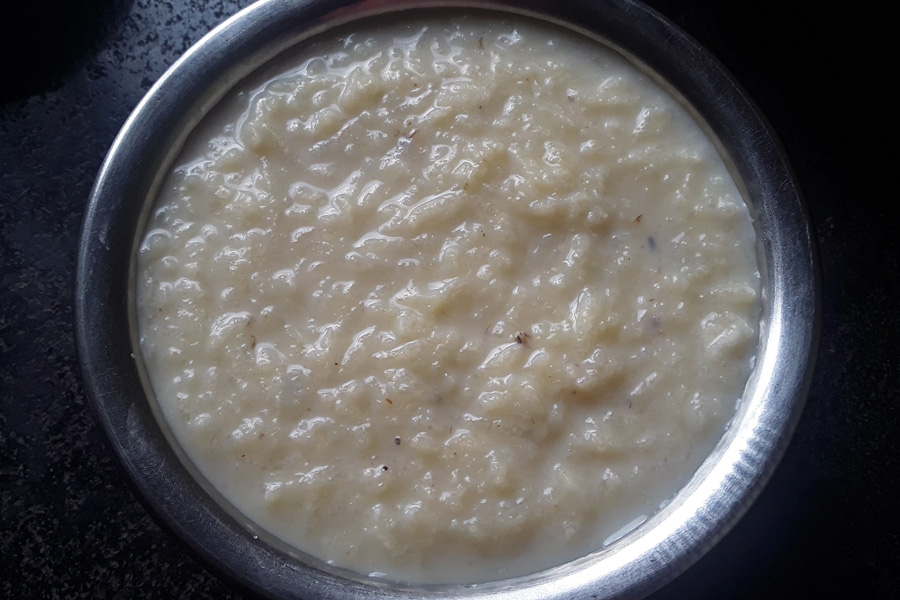
Mogekaayi paayasa | Mogekaayi kheer
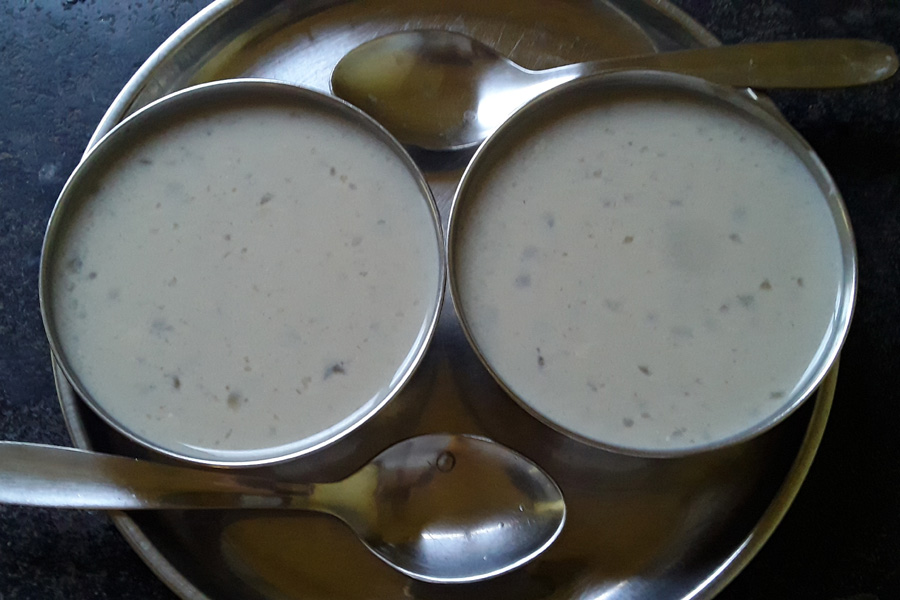
Shabakki paayasa | Sabudana kheer
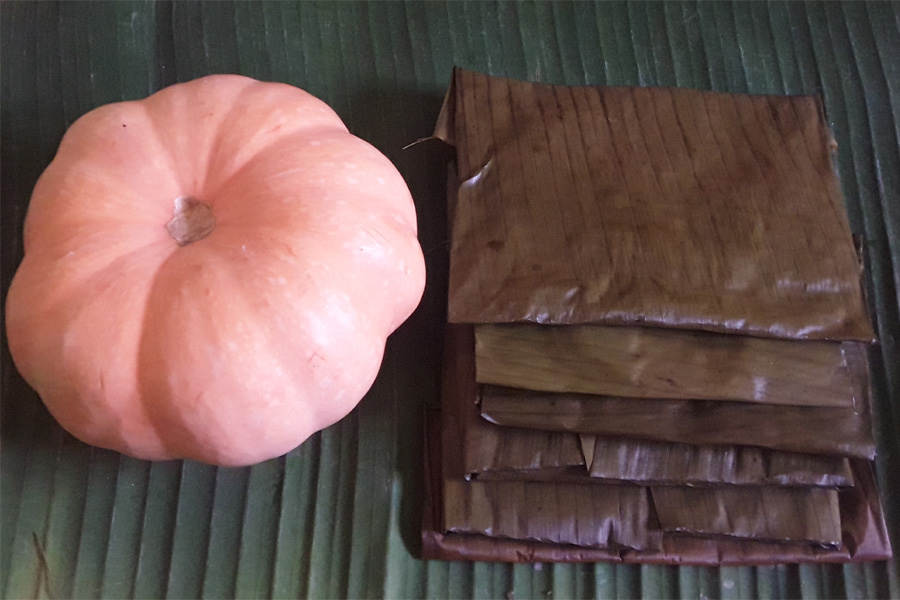
Govekaayi kadbu | Pumpkin kadbu
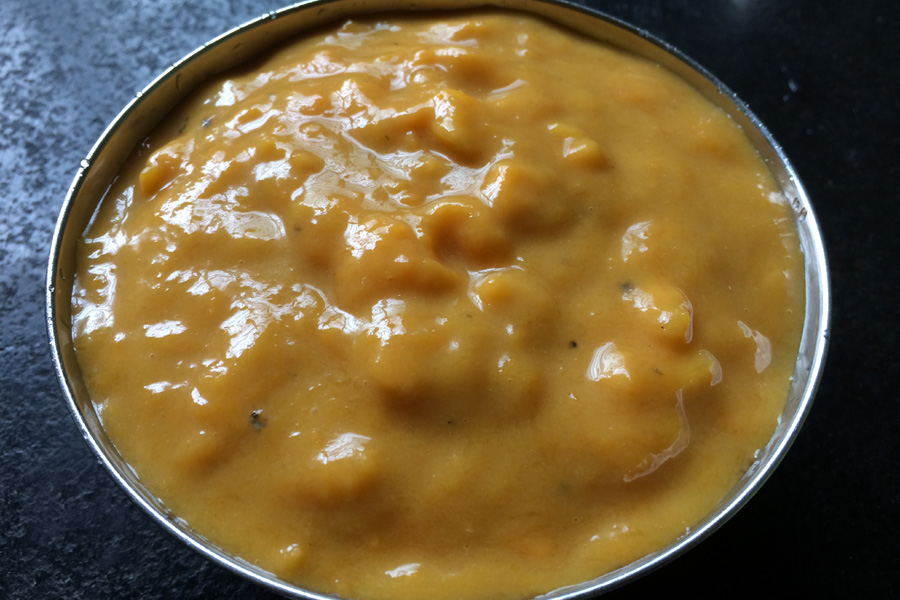
Shikarni or Shreekarni | Sweet Mango pulp
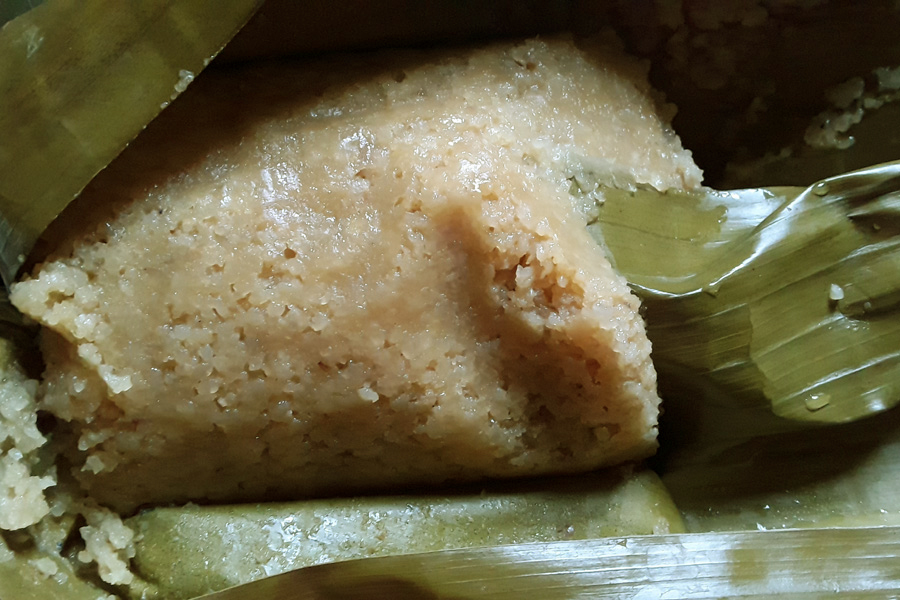
Halasina Hannina Kadbu | Jackfruit Kadbu
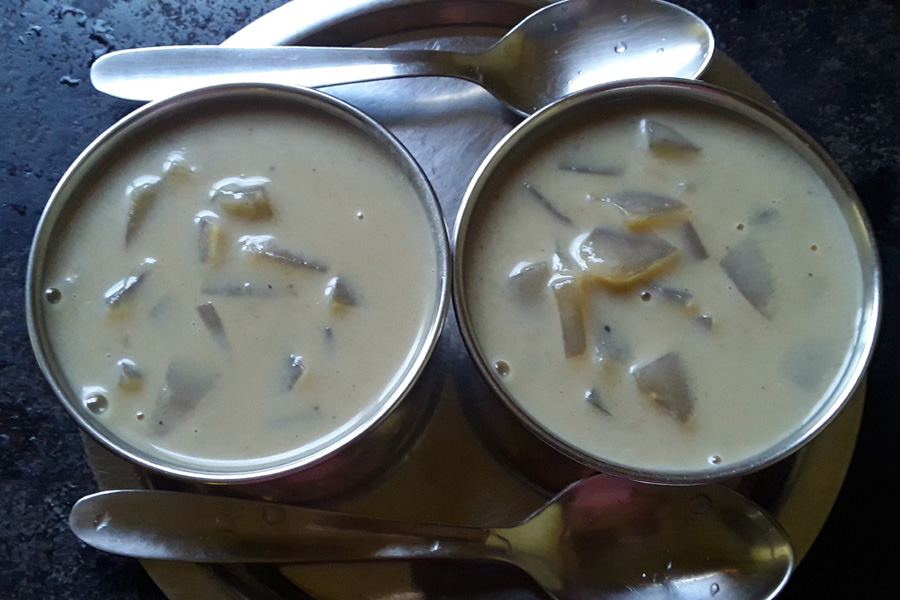
Haalgumbala paayasa | Bottle gourd kheer

Holige | Sweet stuffed flatbread

Haalgumbala kaayi kadbu | Bottle gourd kadbu
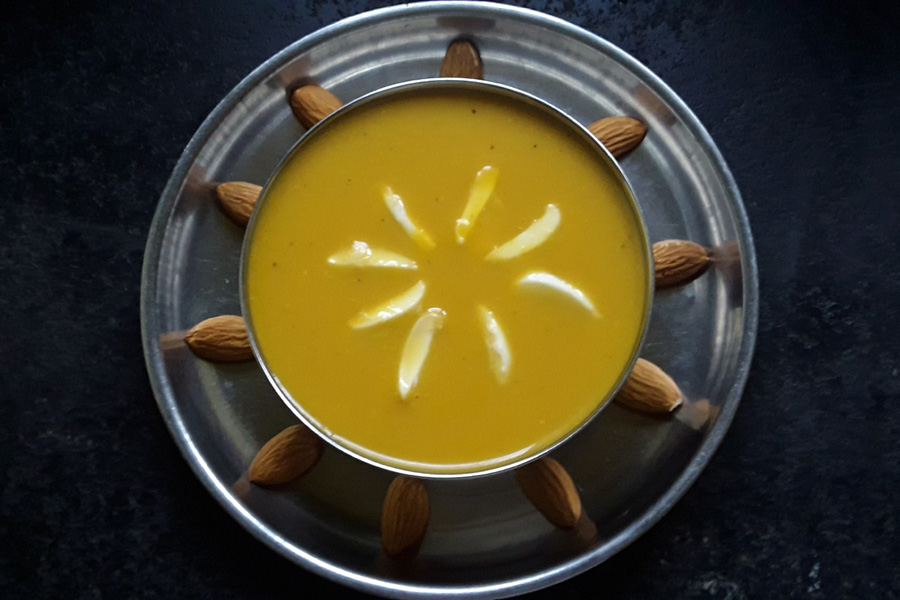
Gajari paayasa | Carrot kheer

Raagi Manni | Finger millet fudge
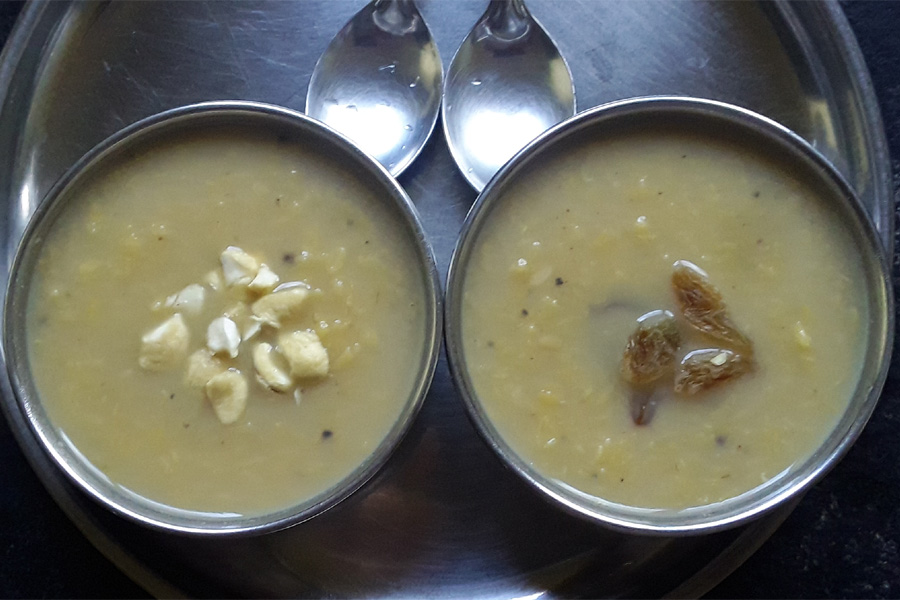
Hesaru bele paayasa | Moong dal kheer
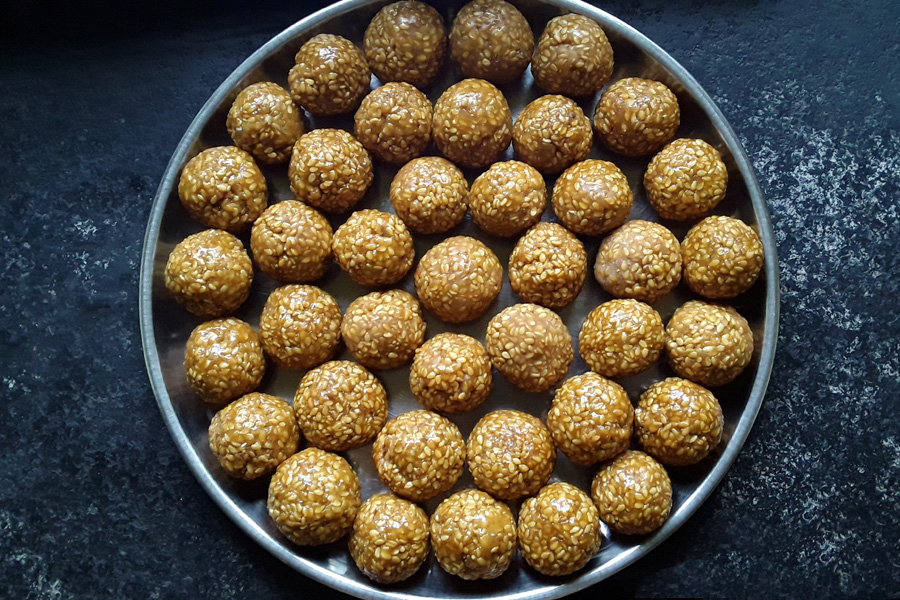
Ellunde | Til or Sesame laddu
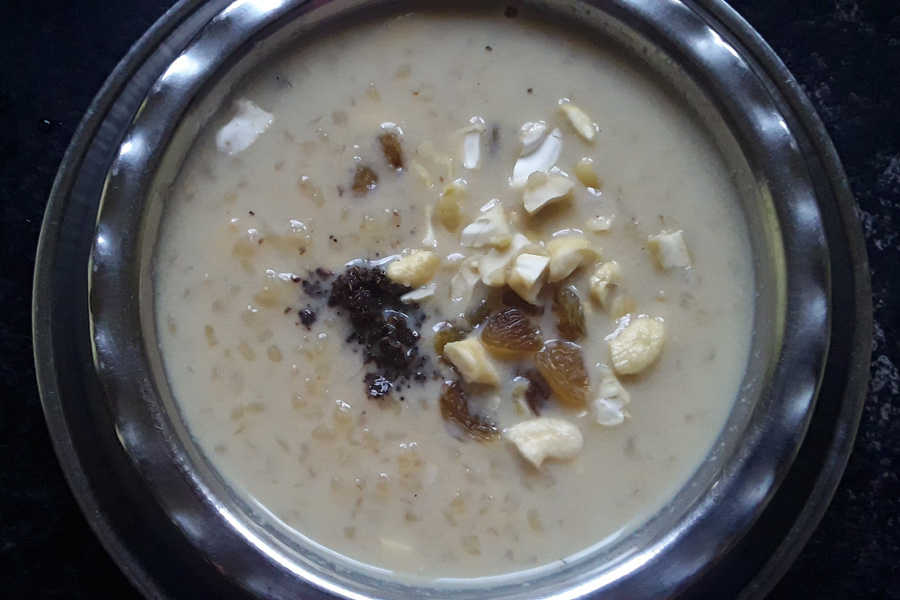
Godhi kadi paayasa | Broken whole wheat kheer
